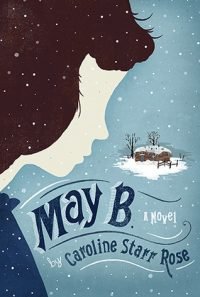Killing Patton
Killing Patton is an excellent historical account of the European theatre during WWII. While the other books in this series that have been reviewed, Killing Jesus and Killing Lincoln, have been rated as suitable for middle grade up, this book should categorized as new adult because the book was not written for children. I rated the previous ones as Young Adult, however, there is a bit more mature content in Killing Patton. There is some language and content that is not appropriate for younger and more sensitive readers.
Pros
Killing Patton goes into detail about the end of WWII, particularly the European theatre. The Battle of the Bulge, the last days of Hitler’s regime, FDR’s death, and the car accident that killed Patton are the focus. O’Reilly and Dugard go into great detail to put George S. Patton’s military career, particularly his role in the Battle of the Bulge and less on his role in the North African theatre. The book focuses on the life, relationships: personal, family, romantic, and professional of General Patton. The premise of the book is that the car crash that ultimately killed General Patton may not have been an accident but an assassination attempt. The story isn’t told as much as a murder mystery as much as a character study in the enigmatic general. Bill O’Reilly narrates the audio version of Killing Patton, and I highly recommend it.
Cons
There are a few, which is why I categorized Killing Patton as New Adult . If you’ve ever seen the Academy Award Winning Patton starring George C. Scott, you will know that General Patton was a colorful character. With this there are some swear words, innuendo, and coarse language. Extramarital affairs of General Patton, FDR, etc. are discussed. While not graphic, this makes the content more mature. This is a book set during a long and bloody war, there are some descriptions of wounds etc. that might bother some sensitive readers or listeners.
Rating
4.5 Stars. Overall, Killing Patton is well-written and engaging. Like Killing Jesus and Killing Lincoln, the book rates 5 stars on the content and execution. New Adult allows for a bit more mature content, but even with this caveat, there is some coarse language and innuendo. As with the other books in the series, the historical details are the highlight of this book. My husband and I listened to the audiobook. Bill O’Reilly narrates and has an engaging voice. However, I suggest reading or listening to the book before deciding if it’s appropriate for your children, students, etc.
Personal Opinion
We have listened to all of the O’Reilly-Dugard “Killing” books, and this is the third in my series on these books because I think each of them offers fantastic insight into the social and political climate at the time. However, not all will carry 5-star ratings even though the writing quality and level of detail are the same. This is the first one that I would not call entirely family friendly due to some objectionable content cited above. There is some language that might be objectionable to some people. Battles, Hitler’s suicide, FDR, and General Patton’s extramarital affairs are discussed. There is some innuendo/coarse language mostly in the context of quotes and correspondence.
Discussion points for parents & teachers:
- What did you know about FDR? Did your opinion of him and his actions change after reading this book?
- What did you know about General Eisenhower? Did your opinion of him and his actions change after reading this book?
- What did you know about Winston Churchhill? Did your opinion of him and his actions change after reading this book?
- Did you know much about General Patton before you read this book? What was something about him that you learned?
- What do you think were some good things about General Patton?
- What do you think were some of General Patton’s character flaws?
- Did you learn anything new about Adolf Hitler?
- Did you learn anything new about Nazi Germany?
- Do you think General Patton’s car accident was really an accident or do you think someone tried to hit his car on purpose?
Parents will appreciate the historical account of this time in history. For teachers and librarians there are so many great topics that can springboard from this book.











